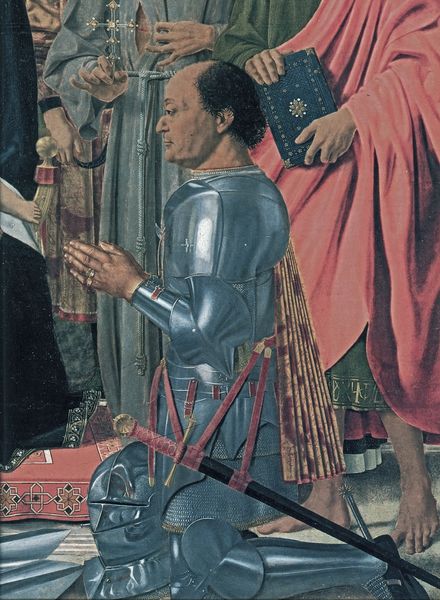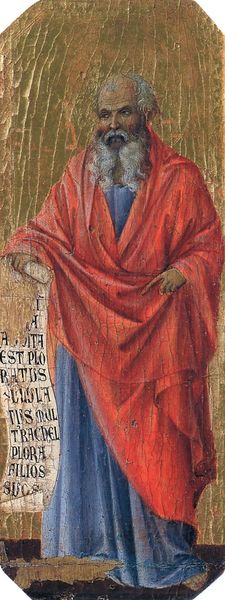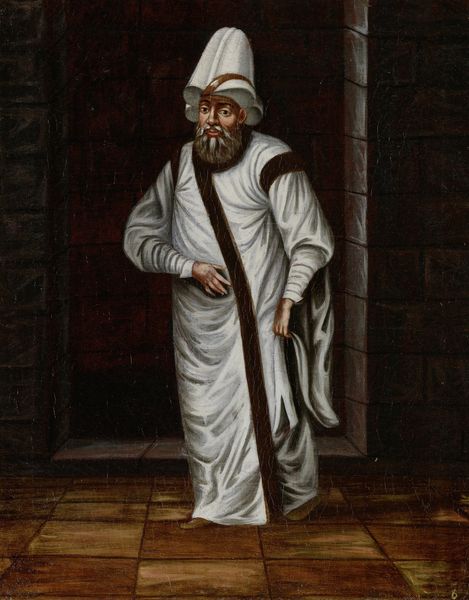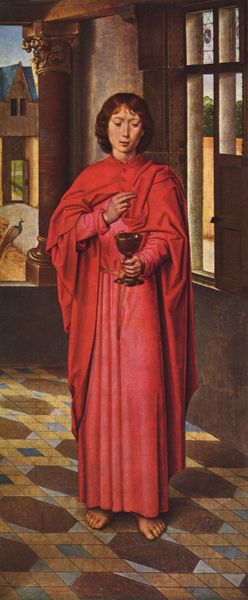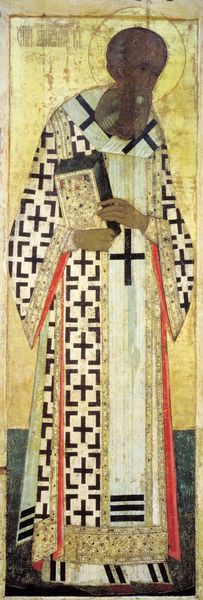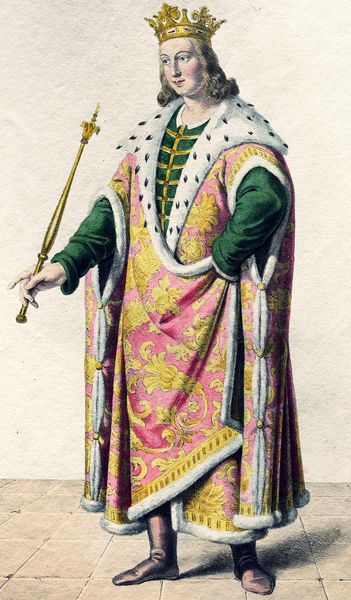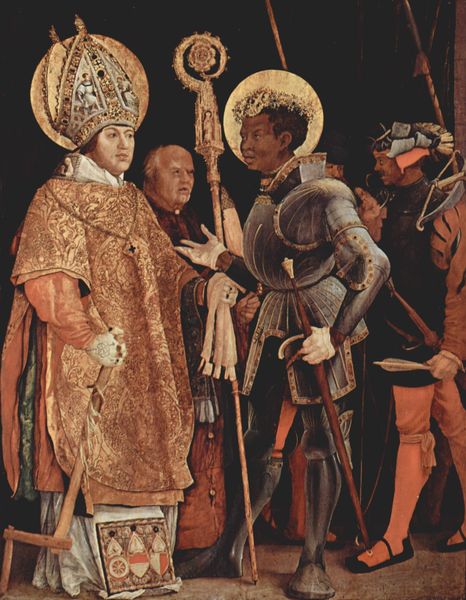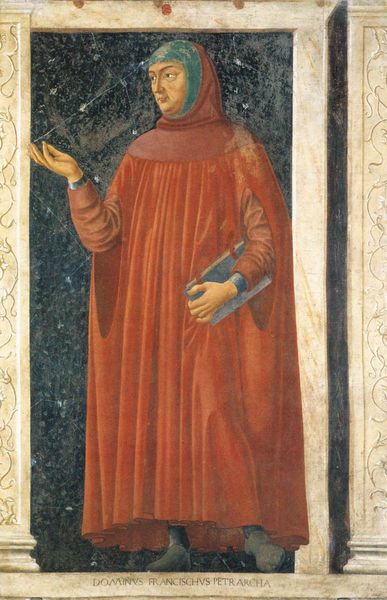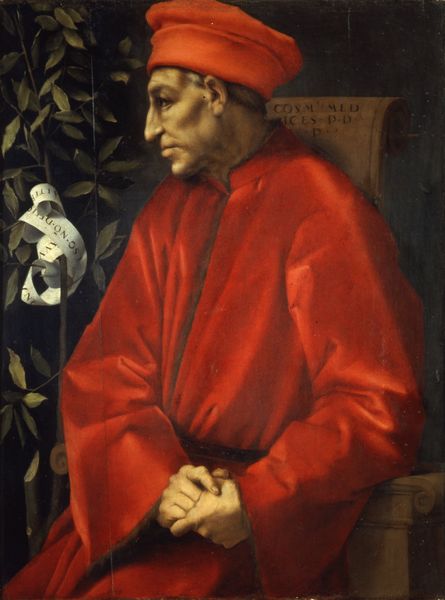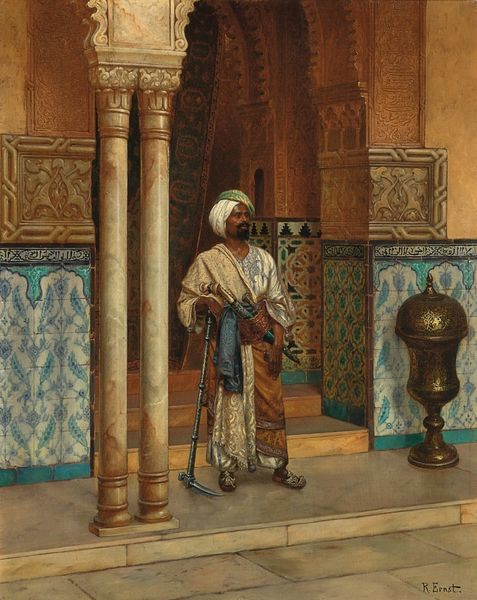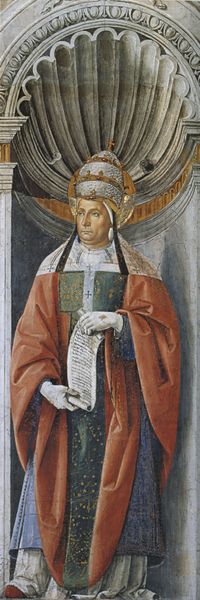
painting
#
portrait
#
baroque
#
painting
#
historic architecture
#
orientalism
#
islamic-art
#
genre-painting
#
historical building
Dimensions: height 39 cm, width 31 cm
Copyright: Rijks Museum: Open Domain
Curator: Jean Baptiste Vanmour’s “The Kislar Aghassi, Chief of the Black Eunuchs of the Sultan,” painted sometime between 1700 and 1737, depicts a high-ranking Ottoman official. The work provides a glimpse into the power structures within the Sultan's court. Editor: My initial impression is one of stark contrasts. The figure, illuminated in what seems like a dark interior, dominates the visual space. There’s a very deliberate play with light and shadow here that I find striking. Curator: Absolutely. Consider the symbolic weight of the colors. The vibrant red of his robe—signifying power, passion—juxtaposes the stark white of his turban and cloak, suggesting purity and perhaps a detachment from worldly affairs. The interplay reinforces his unique position within the Sultan’s inner circle, a man of significant authority yet existing outside traditional societal roles. Editor: Yes, and the architecture, though minimal, creates a sense of enclosure. The shadowed doorway, the barred window...they're almost like visual metaphors for his confinement, his life lived within the boundaries of the palace, even as he wields power. The orthogonal lines and limited depth of field add to the feeling of structured constraint. Curator: The barred window, partially occluded, I suggest it could symbolize the partial insight into a concealed world. The figure’s presentation suggests access to the inner secrets and intrigues of the Ottoman court. His slightly raised hand is also notable. Editor: The hand gestures seems deliberately staged—an invitation, perhaps, or a subtle indication of command. This links, iconographically, to gesture in portraiture through diverse global systems of meaning. And the detailed rendering of the sash, as well as of the patterned tiles underfoot, contributes to a visual language of both authority and meticulous observation. Curator: Note how Vanmour’s meticulous style, reminiscent of Baroque sensibilities yet leaning towards Orientalist themes, reflects the fascination with the “exotic” East prevalent during the period. This careful balance of Western aesthetics with Ottoman subject matter results in an extremely stylized aesthetic and intriguing study of power and position. Editor: Indeed, reflecting upon this painting, I’m reminded of the power of objects and setting in lending character, or even projecting character onto a subject, within a portrait. It encourages the viewer to construct their own narrative about the sitter. Curator: I concur. It is the perfect balance of form and content that keeps this portrait fascinating even after all these centuries.
Comments
No comments
Be the first to comment and join the conversation on the ultimate creative platform.
